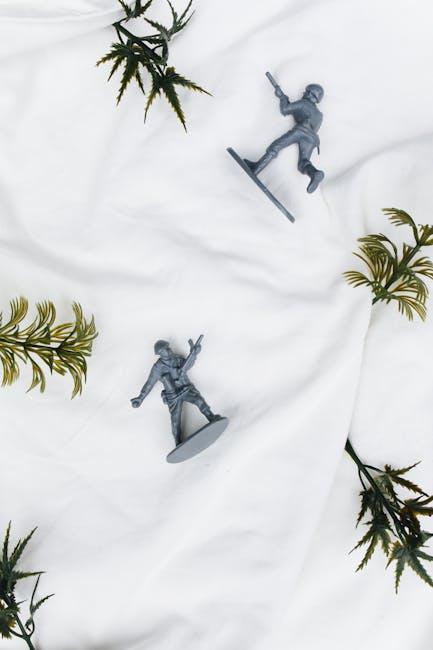In the dimly lit corners of early film studios, artisans once crafted intricate miniatures, breathing life into fantastical worlds with their hands. These delicate creations, though small in scale, loomed large on the silver screen, captivating audiences with their tangible magic. Fast forward to the present, where digital wizards conjure entire universes with a click, rendering landscapes and creatures in vivid detail unimaginable just decades ago. This seamless blend of art and technology marks the evolution of visual effects, a journey from the tactile charm of miniatures to the limitless possibilities of digital environments. Join us as we explore this fascinating transformation, where tradition meets innovation, and imagination knows no bounds.
From Craftsmanship to Code: Tracing the Journey of Visual Effects
The art of visual effects has undergone a fascinating transformation, evolving from the tangible touch of skilled artisans to the intangible precision of code. In the early days, filmmakers relied on miniatures, models, and practical effects, each meticulously crafted to bring fantastical worlds to life. The creation of these effects was a labor-intensive process, requiring a deep understanding of materials, lighting, and camera techniques.
- Miniatures: Handcrafted models that brought scale and realism to the screen.
- Practical Effects: Techniques that used real-world elements to achieve desired illusions.
- Animatronics: Mechanical creations that added life to creatures and characters.
With the advent of digital technology, the landscape shifted dramatically. Code replaced clay, and artists became programmers, crafting entire universes with pixels and algorithms. This digital revolution allowed for unprecedented creativity and flexibility, enabling filmmakers to push the boundaries of imagination further than ever before.

Miniature Marvels: The Artistry Behind Early Cinematic Worlds
In the golden age of cinema, filmmakers crafted entire worlds from the ground up, using intricate miniatures to bring their visions to life. These miniature marvels were meticulously designed and painted, often taking months to complete. Artists and technicians collaborated closely, blending creativity with engineering to ensure that every tiny detail was perfect. The realism achieved through these physical models was astounding, allowing directors to capture breathtaking scenes that felt authentic and immersive.
Some of the most iconic films owe their visual splendor to this art form, including:
- Metropolis – Its futuristic cityscape was brought to life with towering models.
- Star Wars – The saga’s legendary spaceships and planets were first imagined as detailed miniatures.
- Blade Runner – Its dystopian skyline was crafted using carefully constructed models.
These early cinematic worlds set the stage for the digital revolutions that followed, laying the groundwork for the seamless integration of physical and virtual effects in modern filmmaking.

Digital Dawn: How Technology Transformed Visual Storytelling
In the realm of cinematic storytelling, the transition from tangible miniatures to expansive digital environments marks a revolutionary shift. Miniatures, once meticulously crafted by skilled artisans, brought fantastical worlds to life with remarkable detail. These physical models were enhanced by clever camera angles and lighting, creating the illusion of grandeur and scale. However, as technology advanced, so did the possibilities for visual storytelling.
Enter the era of digital environments, where imagination is the only limit. This transformation is characterized by several key developments:
- CGI Overhaul: Computer-generated imagery has enabled filmmakers to create worlds that defy the constraints of reality.
- Virtual Reality: Immersive experiences allow audiences to step inside the story, engaging with the narrative on a personal level.
- Real-time Rendering: Advances in rendering technology have made it possible to visualize complex scenes instantly, streamlining production.
- AI Integration: Artificial intelligence assists in creating more lifelike animations and effects, enhancing the believability of digital environments.
These innovations have not only broadened the scope of storytelling but have also democratized the tools available to creators, making it possible for anyone with a vision to bring their stories to life.
Future-Proofing VFX: Balancing Tradition with Innovation
In the ever-evolving realm of visual effects, striking a harmonious balance between time-honored techniques and cutting-edge technology is crucial. While digital environments and CGI dominate the landscape, the tactile artistry of miniatures and practical effects still holds invaluable lessons. Future-proofing VFX involves embracing innovation without discarding the foundational skills that have shaped the industry.
- Craftsmanship Meets Technology: The meticulous detail of handcrafted models provides a level of authenticity that can be seamlessly integrated with digital elements to create more immersive worlds.
- Hybrid Approaches: Combining traditional methods with modern technology allows for greater creative flexibility, ensuring that storytelling remains at the forefront of VFX.
- Preserving Skills: Training new generations in both analog and digital techniques ensures a robust skill set that can adapt to future technological advancements.
By nurturing this synergy, the VFX industry can continue to innovate while honoring its rich legacy, paving the way for future advancements that respect the past.

